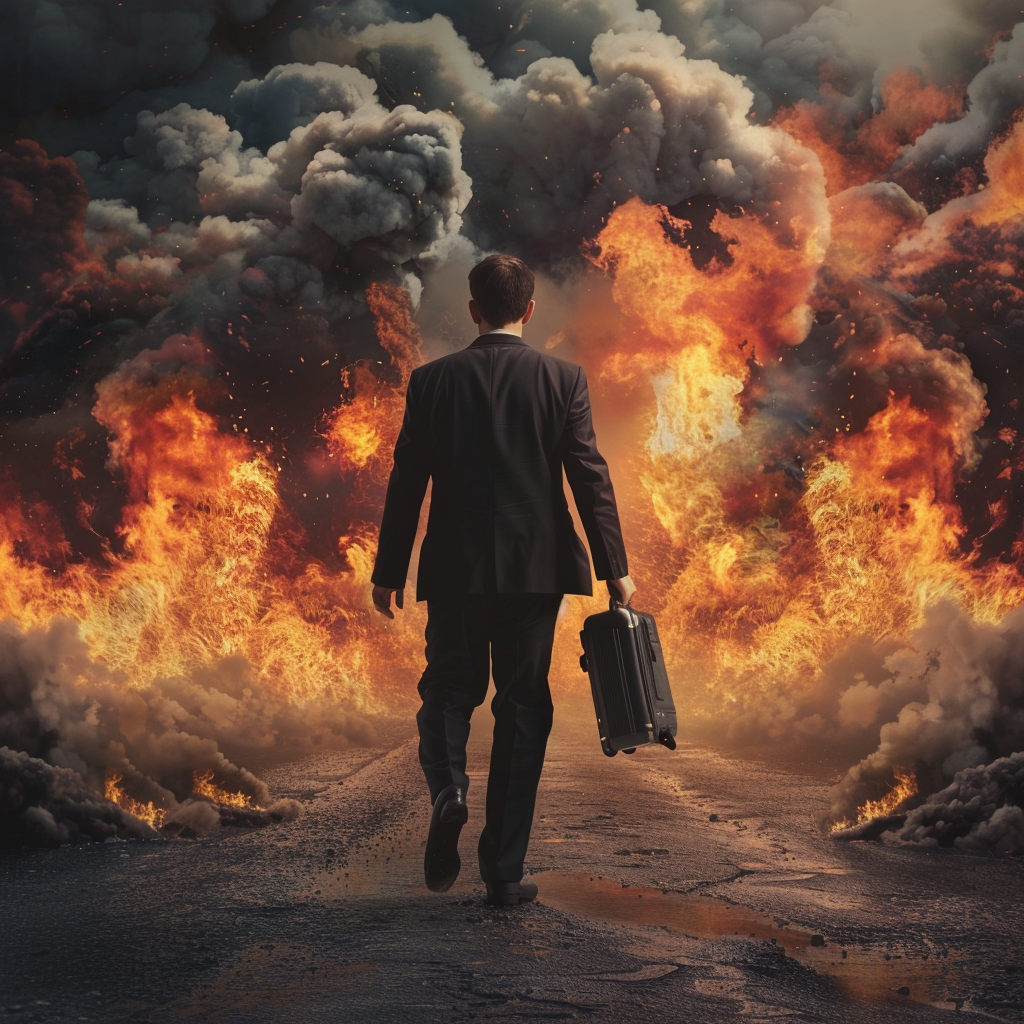Midjourney: More Dangerous Than You Think
/imagine… getting fired thanks to your team misunderstanding or misusing Midjourney.
Don’t get me wrong, I love Midjourney. I think it’s still by far the best image generation app, and I use it nearly every day.
But I am finding it increasingly hard to recommend to professional designers and Creative Directors working inhouse or within agencies. Let me explain why.
There are five significant risks with using Midjourney for commercial use. Some, but not all of these risks are shared by other image generation tools (such as Stable Diffusion), but Midjourney I believe is the only app to tick every single risky box.
Imagine you are doing advertising work for an FMCG brand and have a Basic (US$10 /mth) or Standard (US$30 /mth) subscription of Midjourney. It might be in your personal name, or maybe your company pays the subscription.
Now imagine you are generating images for a new campaign for a secret as yet unlaunched product. They look great! The hands have five fingers, the skin looks real, the fake people are smiling, as is the brand manager who just saved $50k by not needing a photo shoot on an island in the Bahamas (although they’re also a little sad about not getting a trip to the Bahamas).
So, what’s the problem? Allow me to list five;
#1 Your private images are not private
Every image you generate for this secret campaign is publicly available. Even if you have a private Discord server. Even if you are privately DM’ing the Midjourney Bot. Anyone can see every image on Midjourney.com by searching for your prompt, or by looking up your Discord username. And from there, they can see your entire history of Midjourney creations with just one click. I am not making this up!
This lack of privacy has always been the case, but it’s not widely known, as when using Discord it seems like your private work is private. However, as Midjourney have started rolling out their Web-based app at Midjourney.com, which defaults to an ‘Explore’ tab, it is becoming faster and easier to see your private, secret work.
The only way to ensure your images are private is to a) be on a Pro or Mega plan (I’ll save you the trouble of looking up the price, a Pro plan is US $60 /mth, and Mega is twice that) and to generate all images in “Stealth” mode. This will only apply to images generated from now on, your past image history will still remain public.
If you want to remain secret on Midjourney, two more tips are: don’t use your real name as your MJ username (as people will know they’re your images) and don’t share your prompts publicly online (as people can then search for them).
#2 You don’t own the usage rights to the images
Neither you, nor the agency, nor the FMCG brand can legally use the gorgeous, sun-soaked five-fingered images you generated. Per the MJ T&C’s “If you are a company or any employee of a company with more than $1,000,000 USD a year in revenue, you must be subscribed to a “Pro” or “Mega” plan to own Your Assets.”
#3 You may accidentally breach copyright
One of the reasons Midjourney is so good, is that it was trained on hundreds of millions of images from the internet, many of which are copyright protected.
Midjourney has no controls to stop users from deliberately or accidentally generating images that will breach someone’s owned copyright.
You should have a review process as a design team to make sure Midjourney doesn’t inadvertently place a patented CoolCabana in your beach scene, or Superman lounging in the background.
Even if your image may not technically be breaching copyright, there is still an ethical question remaining. Your commercial designs are being generated thanks to Midjourney being trained on artist’s work without their permission, as a designer are you ok with that?
#4 You may accidentally reinforce existing biases
This is another downside of the images that Midjourney was trained on, it unwittingly reinforces existing biases that pervade the Internet. This can be easily prompted around (e.g. ask it to correct the bias), but it’s important to be aware.
For example, with this image prompt I asked MJ to include “three CEOs”.
Out of the 12 CEO’s that were generated (over four images), not one of them was female.
#5 You probably don’t own the copyright for your images
This is related to point 2 but applies even if you are using a Pro or Mega plan (which means you have usage rights of your generated images).
If you took a real photo of the gorgeous Bahama’s scene, by default in Australia you (or your Employer) would own the copyright of that image. However, with AI generated images it is uncertain if you do, or could, own the copyright. There are legal cases ongoing in the US which suggest that “no”, the generated image is not protected by copyright, but as yet it us unproven in Australian courts.
If your campaign is a Facebook Ad that will last three weeks, then copyright ownership may not be a deal-breaker. But if it’s the hero image for a major brand campaign, you may wish to think twice. The $50k saved in flights, hotels and sunset cocktails might quickly be evaporated in legal fees, and I know which would be more fun.
Now seems like a good time to reiterate that I love Midjourney and continue to use it (carefully) despite my warnings above. However, I am not creating gen AI images for clients for advertising purposes.
My advice is to a) educate your team and agency in the five points above, so that decisions can be made with the right information. And to b) consider alternatives that might not have the same risks as Midjourney.
For example, Adobe Firefly and Getty Images’ AI Image Generator are 100% private and are not trained on copyrighted materials. Adobe even indemnify users in the case of an accidental IP breach.
Alternatively, Stable Diffusion is an open source model which could be adapted to meet your brands’ needs, including “fine tuning” an AI model on your brand guidelines and styles.
The industry of AI image generation is moving quickly, and it’s important to continue to get the most from it, but also protect yourself, your teams and your brand.
How Time Under Tension can help
Time Under Tension are Australia’s first generative AI experience agency. If you need expert advice in creating custom AI image apps, fine-tuning an AI model on your brand assets, or training your team in how to use generative AI image tools, please get in touch. We are 100% focused on helping brands and agencies to understand and get the most from generative AI tools.




